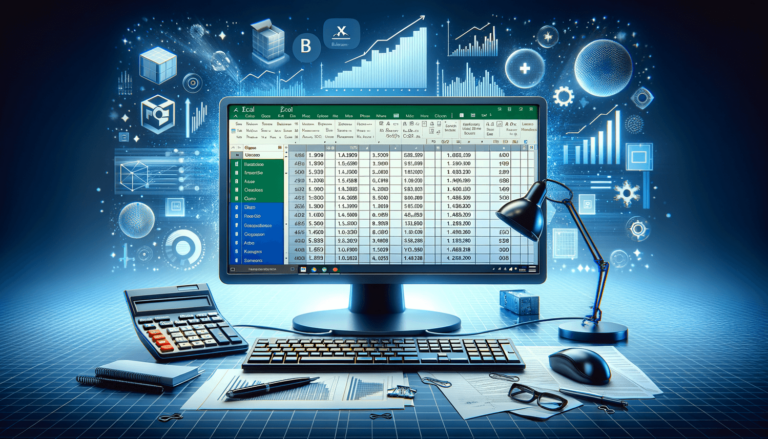

Microsoft Excel Macros are powerful tools that can streamline repetitive tasks, automate reports, and perform complex calculations. In this blog post, we will show you how to add macros in Excel, step-by-step. Whether you are a beginner or experienced user of Excel, this guide is designed to provide you with everything you need to know to get started with macros. By the end of this article, you will have the skills you need to boost your productivity and efficiency in Excel.
Excel Macros are a series of commands and functions that can be recorded and saved to automate repetitive tasks. Macros are a powerful tool that can save time and reduce the risk of errors when you perform the same task repeatedly.
For example, let’s say you have a spreadsheet with a column of numbers that need to be multiplied by a fixed value. Instead of manually typing in the formula or dragging the formula down the column, you can record a macro to perform this task in a matter of seconds. You can then use this macro every time you need to perform this task, saving you time, effort, and reducing the chances of errors.
Before you can start recording a macro, you need to make sure that the Developer tab is visible on your Excel ribbon. If you don’t see the Developer tab, follow these steps:
Once you have the Developer tab visible, you’re ready to start recording your macro:
Now that you’ve recorded your macro, you can run it whenever you need to perform the same task again:
Recording and running macros in Excel can be a huge timesaver, reducing errors and freeing up your time to focus on other tasks. By following the steps outlined in this guide, you can start creating your own macros and become a more efficient Excel user. So go ahead, give it a try and see how much time you can save!
Recording and using macros is a great way to be more efficient with your Excel workflow, but there are some best practices you should follow to get the most out of them:
As with any feature, there are errors that can occur when using macros. Here are some common ones and their solutions:
When you open a spreadsheet with a macro enabled, Excel may display a security warning that says the file contains macros and asks if you want to enable them. To fix this, you need to change the macro security settings in Excel:
If you click on the macro and nothing happens or you get an error message, it could be because the macro is in a hidden sheet or module. To fix this, you need to unhide the sheet or module:
If your macro is not selecting the correct cell range, it could be because the cell range is no longer valid. To fix this, you can manually edit the macro to select the correct cell range:
Excel Macros can be an incredibly powerful tool in your productivity arsenal, allowing you to automate repetitive tasks and save a huge amount of time. We’ve shown you how to record basic macros step-by-step, run them, and discussed some tips and best practices. With these skills, you’ll be able to improve your efficiency and streamline your workflow.
Here are some common questions people ask about Excel Macros:
Macros are not inherently harmful, but they can be used to execute malicious code. To reduce the risk of this, only enable macros from trusted sources. Excel also has built-in security features that help protect your computer from harmful macros.
Yes, you can record a macro for a PivotTable. Macros can be used for almost anything that you can do in Excel, including formatting, calculations, and data analysis tasks like PivotTables.
Yes, you can edit or delete a recorded macro. To edit a macro, right-click on the macro name and select Edit. To delete a macro, right-click on the macro name and select Delete.
Yes, Macros can work with Excel files on different computers, as long as the file is saved in a shared location and the necessary add-ins and reference files are available on both computers.
If you’re having trouble with a macro, try searching for a solution online. There are many forums, blogs, and communities dedicated to helping people with Excel Macros. If you can’t find a solution, consider hiring an expert or taking an online course to improve your skills.
Explore the world of Microsoft PowerPoint with LearnPowerpoint.io, where we provide tailored tutorials and valuable tips to transform your presentation skills and clarify PowerPoint for enthusiasts and professionals alike.

Your ultimate guide to mastering Microsoft Word! Dive into our extensive collection of tutorials and tips designed to make Word simple and effective for users of all skill levels.

Boost your brand's online presence with Resultris Content Marketing Subscriptions. Enjoy high-quality, on-demand content marketing services to grow your business.
